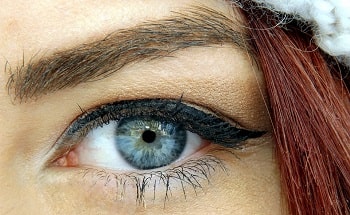Eye color often is the genetic trait that fascinates parents the most as a child develops. Will the child's eyes be black, brown, blue, gray, green, hazel or some combination of colors?
How a child looks depends on the genetic material each parent contributes to the child. But the parents' genes can mix and match in many different ways. The influences from each parent aren't known until — surprise — after the child is born!
Your eye color depends on how much of the pigment melanin you have in your iris—the colored part of your eyes. The more pigment you have, the darker your eyes will be. Blue, grey, and green eyes are lighter because they have less melanin in the iris.
Eye color is an inherited trait and determined by a person’s genes. Most people in the world will end up with brown eyes. The next most common colors are blue and grey, and green is the rarest color.
Besides giving our eyes color, melanin helps protect them from the sun. While all eyes have sensitivit
No matter your eye color, it’s important to always protect your eyes when outdoors whether you need prescription sunglasses or not. Make sure you’re well equipped with a pair of sunglasses to reflect the sun’s harmful rays.
How eye color changes during lifetime
Eye colors usually stay the same throughout a person’s lifetime. Certain health conditions and disorders can cause changes in eye color.
Your eye color might appear to change a bit from time to time. For example, your eyes might look like they’re a darker shade of blue if you’re wearing a blue shirt. The change in colors happens when light reflects off of objects around you.
Some people have a ring of darker pigment around the outside of their iris. Providers call this a limbal ring. It can fade and become less noticeable with age.
What is the most common eye color?
About 10,000 years ago, everyone in the world had brown eyes. Scientists believe that the first blue-eyed person had a genetic mutation that caused the body to produce less melanin. Today, about half of the people in the United States have brown eyes.
Eye colors range from very light blue to dark brown. Some eyes also have flecks or spots of darker or lighter colors mixed in. Eye colors can be many different shades of:
- Amber, which some people describe as copper, gold or very light brown.
- Blue or gray, which occurs when someone has no pigment (melanin) in the front layer of the iris. Around 1 in 4 people in the U.S. have blue eyes.
- Brown, which is the most common eye color in the world.
- Green, which is the least common eye color. Only 9% of people in the United States have green eyes.
- Hazel, a combination of brown and green. Hazel eyes may also have flecks or spots of green or brown. In the U.S., about 18% of people have hazel eyes.
What medications affect eye color?
A type of medication called prostaglandins can cause the iris to change color. Providers use prostaglandins to treat glaucoma. Prostaglandin is also the main ingredient in a serum called Latisse® that lengthens eyelashes. These medications can cause the eyes to become darker.
Superstitions about Eye Color
On a side note, eye color has been the source of superstition through the years. The mystically-inclined believe the eyes are the windows to the soul and eye color shows a person's talents. Some personality traits attributed to eye color are:
- Blue-eyed people have rich imaginations.
- Those with green eyes have sharp minds.
- Hazel eyes indicate passionate souls.
- People with brown eyes are calm but have underlying passion.
Now that you know what gives you your eye color, and the importance of protecting your eyes, head to Golden Eye Optometry to grab some stylish frames.
Sources:
- What Gives Eyes Their Color?
- Why eyes have different colors: a science-based look by Tibi Puiu January 28, 2021
- Eye Colorsby by Cleveland Clinic 06/10/2021
Make your appointment today
To make your appointment, simply give us a call (760)-948-3345 or
or
Due to COVID-19 safety protocols, all eyewear services are currently by appointment only. Please call to make an appointment.
At Golden Eye Optometry, we view good vision care as front line protection at every age. A routine eye exam can detect more than poor vision. It can shed early light on glaucoma, macular degeneration, cataracts and diabetes.
Admiring the hard work you put into your blog and in depth information you provide.
It’s good to come across a blog every once in a while that isn’t the same outdated rehashed material.
Great read! I’ve bookmarked your site and I’m adding your RSS feeds to my Google account.
I know this web page provides quality dependent articles and other
information, is there any other web page which offers such data
in quality?
hey there and thank you for your information – I’ve certainly picked up something new from right here.
I did however expertise a few technical issues using this
web site, as I experienced to reload the site many
times previous to I could get it to load correctly.
I had been wondering if your web host is OK? Not that I am complaining, but slow loading instances times will often affect your placement
in google and could damage your quality score if advertising and marketing with Adwords.
Anyway I’m adding this RSS to my e-mail and could look
out for much more of your respective intriguing content.
Make sure you update this again soon.